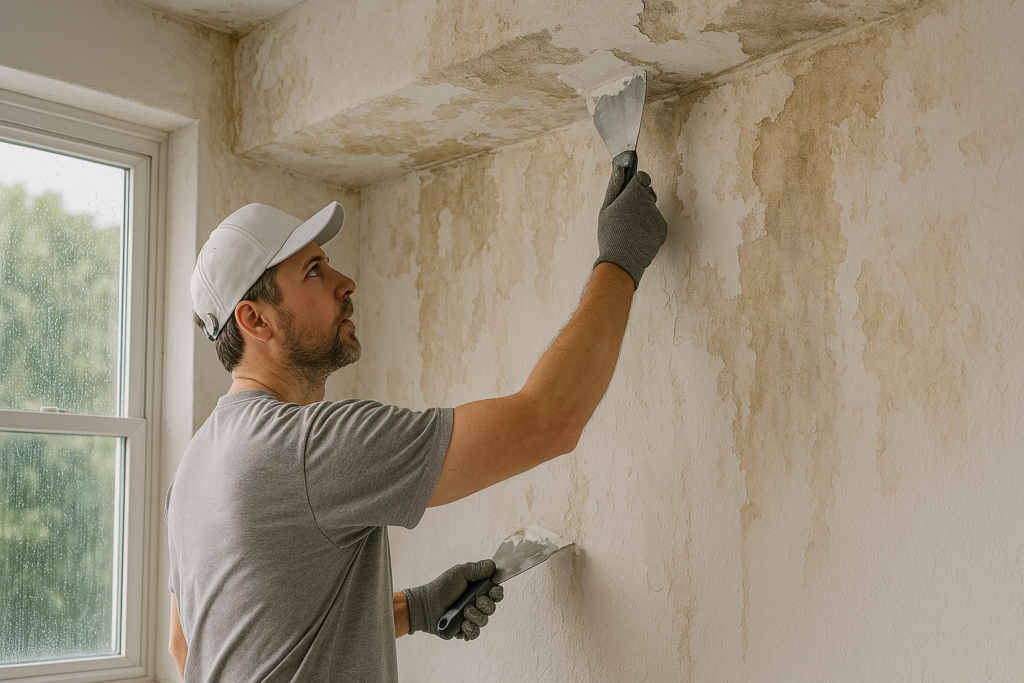Basement water damage is a major concern for homeowners, as it can lead to structural problems, mold growth, and expensive repairs. Preventing water damage is crucial for maintaining a safe and dry living environment. Follow these steps to safeguard your basement from water damage.
1. Keep Gutters and Downspouts Clear
Gutters and downspouts are essential for directing rainwater away from your home. Regularly clean them to prevent clogs that can cause water to overflow and seep into your foundation. Ensure downspouts extend at least 3-4 feet away from the house.
2. Maintain Proper Yard Grading
Your yard should slope away from the foundation to prevent water from pooling near the basement. If necessary, add soil around your home to create a proper slope, which should drop at least one inch per foot over a distance of four feet.
3. Install and Maintain a Sump Pump
A sump pump is an effective tool for keeping your basement dry. Install a sump pump in the lowest area of the basement and check it regularly to ensure it is working. A battery backup system is also recommended to keep the pump operational during power outages.
4. Seal Cracks and Leaks
Water can enter your basement through small cracks in the walls and floors. Inspect your basement for cracks and use waterproof sealant or hydraulic cement to repair them. If cracks persist, consult a professional for further assessment.
5. Apply Basement Waterproofing
Consider applying waterproof coatings to basement walls and floors to prevent moisture from seeping through. Exterior waterproofing, including a waterproof membrane on foundation walls, is an additional measure for long-term protection.
6. Install a Drainage System
French drains and other drainage systems help redirect water away from your home. A French drain consists of perforated pipes buried in gravel to collect and divert water from the foundation.
7. Ensure Proper Foundation Drainage
Foundation drains, also known as weeping tiles, help channel excess water away from your home. If you suspect your foundation drains are clogged or not functioning properly, seek professional assistance.
8. Maintain Your Plumbing System
Leaking pipes, faulty water heaters, and broken appliances can contribute to basement water damage. Conduct routine plumbing inspections and fix leaks immediately to prevent major damage.
9. Install a Water Alarm
Water alarms can detect leaks and alert you before significant damage occurs. Install them near water heaters, sump pumps, and other high-risk areas in your basement.
10. Insulate Basement Pipes
Cold temperatures can cause pipes to freeze and burst, leading to water damage. Insulate exposed pipes to protect them from freezing during winter.
11. Use a Dehumidifier
High humidity levels can contribute to condensation and mold growth. Use a dehumidifier to maintain optimal moisture levels and prevent damp conditions in your basement.
12. Store Valuables Properly
Store items in plastic bins instead of cardboard boxes to protect them from potential water damage. Keep valuables elevated off the floor using shelves or pallets.
13. Install Window Well Covers
Basement windows are vulnerable to water intrusion. Install clear plastic or metal window well covers to keep rain and debris out.
14. Check for Hidden Leaks
Hidden leaks in walls and floors can go unnoticed until significant damage occurs. Conduct periodic moisture tests and look for signs of mold or water stains.
15. Develop a Water Damage Plan
Even with all precautions, unexpected water damage can still occur. Create an emergency response plan, including contact information for restoration professionals and steps to take in case of flooding.
Protecting your basement from water damage requires a combination of preventive maintenance and proactive solutions. Regularly inspecting gutters, ensuring proper drainage, sealing cracks, and using a sump pump are crucial steps in keeping your basement dry. By implementing these strategies, you can minimize the risk of water damage and preserve the integrity of your home.

